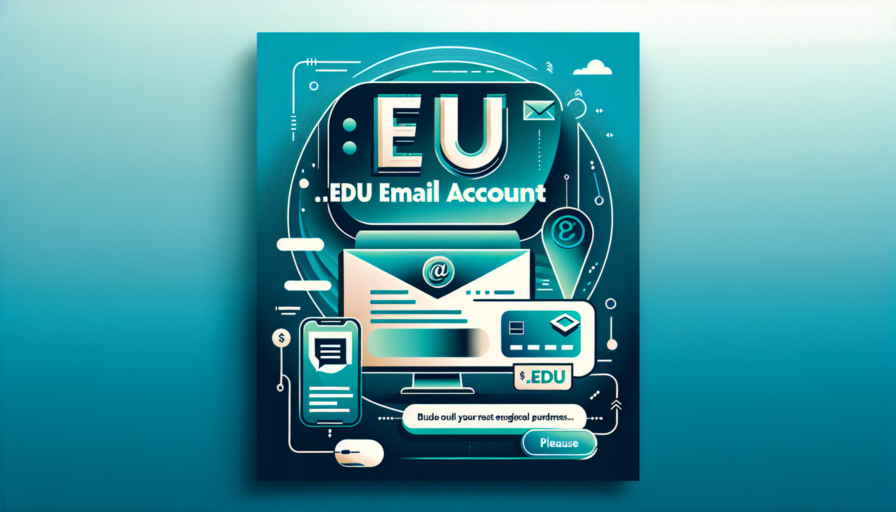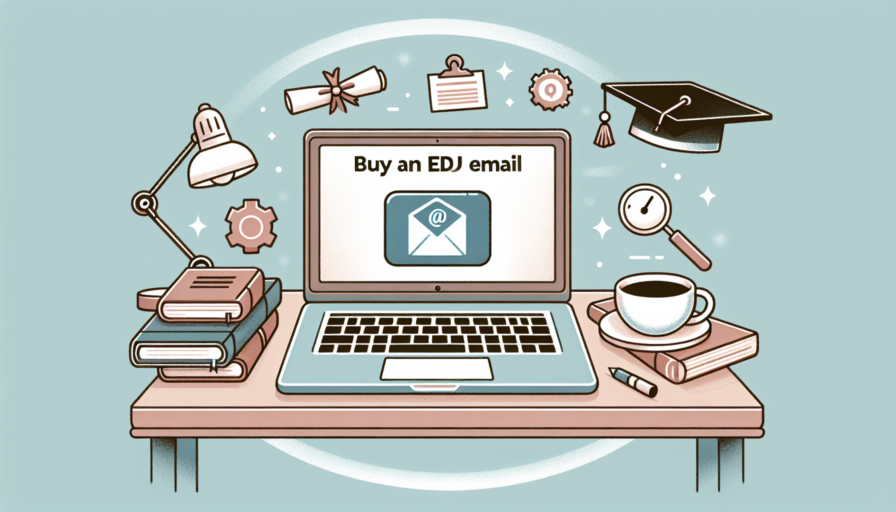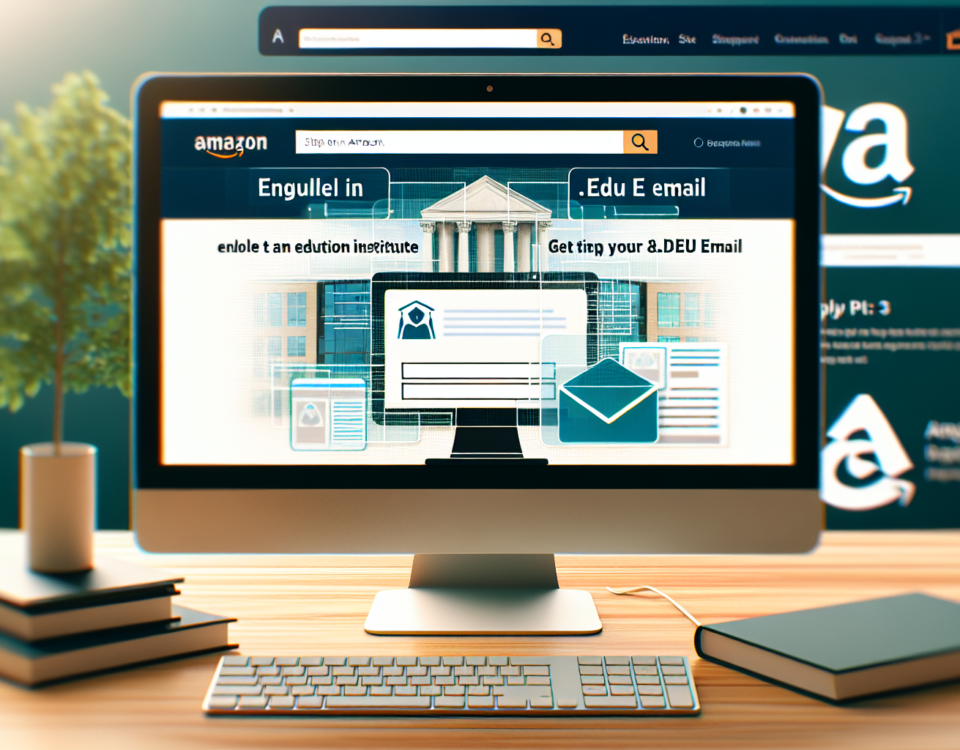Unlock Academic Benefits: The Ultimate Guide to Getting an EDU Email Account
February 15, 2024
How to Create an EDU Email: A Step-by-Step Guide for Students and Educators
February 15, 2024What Are the Benefits of Having an Edu Mail Address?
As an educational email address generally provided to students, faculty, and staff at educational institutions, an edu email address can offer a multitude of advantages that extend beyond the realm of academia. These .edu addresses are not only a means of communication but also unlock access to a treasure trove of resources, exclusive discounts, and professional networking opportunities.
Exclusive Access to Educational Resources
One of the core benefits of an edu mail address is the exclusive access it provides to academic resources. Many online journals, libraries, and databases require a verified educational email for entry, allowing students and educators the ability to conduct extensive research at no extra cost. This can be a critical advantage for those working on their thesis, dissertation, or any academic project that requires in-depth scholarly resources.
Eligibility for Software and Product Discounts
With an edu email address, students and educators are often eligible for significant discounts on software, subscriptions, and technology products. Companies like Microsoft, Adobe, and Apple offer reduced rates or even free access to their products for educational purposes. This can include anything from complimentary versions of Microsoft Office to discounted prices on laptops and tablets tailored for educational use, enabling users to stay up-to-date with the latest technological tools without the financial burden.
Networking and Professional Development
An edu email address can also open the door to various networking and career development opportunities. Many professional organizations and groups give preference or exclusive access to members with a verified educational email address, putting students and staff at an advantage when it comes to attending workshops, webinars, and conferences. This networking potential not only fosters professional growth but often leads to career opportunities that might not be as readily available to those without this valuable educational credential.
Moreover, the presence of an edu email address often carries a certain level of credibility and prestige. As it signifies a direct association with a learning institution, it inherently suggests a level of education and dedication to scholarly pursuits, which can impress potential employers or collaborators. This aspect of credibility is not to be underestimated when building a professional identity in the digital age.
Who Is Eligible for a Free Edu Email Account?
The eligibility for a free .edu email account primarily hinges on one’s affiliation with an accredited educational institution in the United States. Typically conferred to individuals who are attendees or employees of higher education institutions, .edu email addresses are a hallmark of students, faculty, and staff members. These email accounts are often provided by the educational institution itself as part of its information technology services to facilitate academic and administrative communications within the campus community.
Students enrolled in a college or university are the most common recipients of a free .edu email account. Enrollment must be in an accredited institution that grants degrees or certificates. This generally includes full-time, part-time, undergraduate, and graduate students. After admission to the school, students typically receive instructions on how to set up their .edu email accounts. Importantly, continued eligibility often requires that the student maintain their enrolled status at the institution.
In addition to students, academic staff and faculty members are also eligible for a free .edu email account. The benefits of having a .edu email extend beyond basic communication to include access to software, online resources, and library systems specific to academic and education-oriented services. This eligibility is also conferred upon visiting professors, researchers, and other temporary academic staff as long as they remain employed with the institution.
Furthermore, administrative personnel and other support staff working at educational institutions with a .edu domain can also obtain their own .edu email addresses. The scope of eligibility may vary by institution, but it typically includes those involved in management, operational, technical, and support roles that contribute to the functioning of the educational entity. Access to a .edu email account for staff members serves to streamline institutional operations and provides a professional point of contact for internal and external communications.
Step-by-Step: How to Sign Up for Your Free Edu Email
Signing up for a free .edu email address can unlock numerous educational discounts and offers exclusive to students and educators. To help you through the process, we’ve compiled a straightforward, step-by-step guide that will have you using your new .edu email in no time. A .edu email not only serves as a means of communication with your institution but also signals to vendors and service providers your eligibility for special promotions and academic resources.
Step 1: Determine Your Eligibility
The first step in obtaining a free .edu email address is to ensure that you are affiliated with an educational institution that provides these email accounts. Typically, these include colleges, universities, and in some cases, community colleges and vocational schools. Students, faculty, staff, and sometimes alumni are eligible for an .edu email, and verifying your status as a member of one of these groups is essential.
Step 2: Gather Required Information
Before initiating the signup process, gather all necessary documents and information. This usually includes personal identification details, such as your full name, date of birth, and social security number. If you are a student, you may also need your student ID number, admission paperwork, or an acceptance letter. Employees would require their employee ID or other related documents. Ensuring that you have all this information at your fingertips will make the entire process faster and smoother.
Step 3: Navigate to the Sign-Up Page
Most educational institutions have a designated sign-up page for email account creation. You typically find this on the institution’s website, usually within the “Current Students” or “Faculty and Staff” sections. Look for sections labeled as “IT Services,” “Email,” or “Account Setup.” Some schools might provide this service during the enrollment or orientation process, so it’s essential to pay attention to any instructions provided about your .edu email during these times.
Step 4: Complete the Sign-Up Process
On the sign-up page, you will be prompted to enter the information you’ve previously gathered. Follow the on-screen instructions carefully, which may involve creating a username and password that meet specific security criteria. After you’ve submitted all the required information, there might be a verification process via an alternate email address or a mobile phone number. Once verified, your new .edu email account should be ready to use. Remember to note down your email address and password, and keep them secure.
Maximizing Your Edu Email Benefits: Top Services and Offers
Educational email addresses, typically ending in .edu, are more than just a means for students and educators to communicate internally. These email accounts unlock a plethora of discounts, exclusive offers, and premium services tailored specifically for the academic community. By leveraging your .edu email, you can gain access to a treasure trove of resources that can enrich both your academic and personal life, all while saving money.
Some of the most valuable benefits come in the form of software and technology services. Renowned companies like Adobe, Microsoft, and Autodesk offer substantial discounts, or even free access, on their professional software suites for users with a .edu email. This access allows students and faculty to work with the same high-caliber tools that industry professionals use, giving them a competitive edge in their fields of study and future endeavors. Additionally, web hosting and cloud storage providers, such as Amazon Web Services, Google Cloud, and Microsoft Azure, provide generous educational grants or credits, enabling learners to explore and build on cutting-edge platforms.
Moreover, streaming and entertainment platforms recognize the value of educational account holders by offering sensational deals. Services like Spotify, Hulu, and Apple Music often combine their subscriptions at a fraction of the regular cost, including access to vast libraries of music, movies, and TV shows, which serve both as relaxation outlets and educational resources. Similarly, online learning platforms like Coursera, LinkedIn Learning, and the GitHub Student Developer Pack present exclusive no-cost or reduced-price memberships, opening up a world of knowledge and professional development tools to students and educators.
In addition to tech deals, .edu emails serve as golden tickets to an array of academic resources. Many scholarly journals and digital libraries provide free or heavily discounted access to students and faculty, helping them stay abreast of the latest research in their fields. This perk also extends to textbook purchases and rentals, where online bookstores offer significant price cuts, minimizing one of the common high costs associated with education. Navigating student life becomes more manageable and affordable through local and national retailers that appreciate the importance of supporting educational pursuits.
Avoiding Common Mistakes When Applying for an Edu Mail
When attempting to secure an educational (.edu) email address, there are a few common pitfalls that can hinder the process, rendering efforts ineffective or causing frustrating delays. Being aware of these missteps can streamline your application and ensure that you get your .edu account with minimal hassle.
Providing Inaccurate Information: One of the most prevalent mistakes made during the application process is the submission of incorrect personal details. Educational institutions require precise information to verify your eligibility for an edu mail account. This information often includes your full name, date of birth, contact information, and student ID number. Errors in any of these details can lead to immediate rejection of the application. It’s vital to double-check each field for accuracy before submission to avoid unnecessary delays or denials.
Ignoring Application Deadlines
Another common oversight is missing the specified deadlines for .edu email applications. Many schools have a strict timeframe within which you can apply for your educational email. Missing these deadlines can lead to a prolonged wait because you may have to wait for the next enrollment period. Mark your calendar with the deadline dates and aim to submit your application well in advance to circumvent any last-minute roadblocks that could arise.
Overlooking the Verification Process
Lastly, failure to properly complete the verification process is a frequent error among applicants. After submitting your application for an edu mail account, a confirmation email or a verification step is typically required. This may involve clicking a verification link or providing additional documentation to prove your academic status. Neglecting to follow through with these steps promptly can lead to the suspension or cancellation of the application. Ensure that you check your current email regularly for any follow-up instructions and respond as soon as possible to solidify your .edu email setup.







